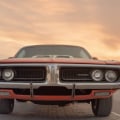Sometime in the 1960s, Mopar became general jargon for cars made and sold by Chrysler, Dodge, and Plymouth. Over the years, its reach grew to include previous brands such as DeSoto and Imperial and, eventually, Jeep and Ram. Mopar's musculature has been respected for decades in classic car enthusiast circles. These iconic vehicles have been reverently referred to as “before the exhibitions”, letting their engines do the talking and adding moldings, front cones, wings and decals to give them style.
Next, the first-generation Dodge Charger is, without a doubt, one of the most iconic Mopar cars of all time. Although technically the spare parts division of Chrysler, Mopar has shared engines with brands such as Dodge and Plymouth to create numerous specialized classic models, such as the Charger Daytona, the Coronet Super Bee, the Roadrunner Superbird, the AAR 'Cuda, the Scat Pack and the Rapid Transit System editions. More recently, Mopar has been working on the development of the Hemi Hellephant 426, which pays homage to the classic 426 Hemi, but with an additional supercharger to boost a whopping 1000 hp and 950 pounds. The first Mopar to have this configuration was the 1957 Plymouth Fury, the car that won the Motor Trend Car of the Year award.
By ordering a HEMI engine, shortened a car's warranty to 90 days, Chrysler knew what people were doing with their HEMI equipped cars. If you've ever seen a Mopar muscle car, you've probably noticed strong colors compared to its GM and Ford counterparts, and this was intentional. Anyone who has ever gotten under a Mopar muscle car from the 1960s knows the torsion bar front suspension, a unique design that was widely used at the time. Machine gun exhaust tips were banned in the state of California due to emissions, so if your 1971 Mopar Muscle Car in its original state doesn't have them, it's very likely that the car was originally sold in California.
We highlight Mopar, manufacturer of some of the most iconic muscle cars in the United States, and some of the great AMSOIL. Chrysler cars (also known as Mopars) are often treated like the red-haired stepchildren of the American automotive scene. Today, as in the original era of muscle cars, Mopar is the name of the parts and service division of Fiat Chrysler Automobiles. Recognized as the undisputed leader in the restoration parts industry, Classic Industries is one of the industry's largest and most respected distributors of original GM and MOPAR and reproduction, high-performance and original parts and accessories.
Soon, the term Mopar began to be used as a nickname for the cars themselves, not just to refer to the Mopar parts that were used to modify or maintain them.







